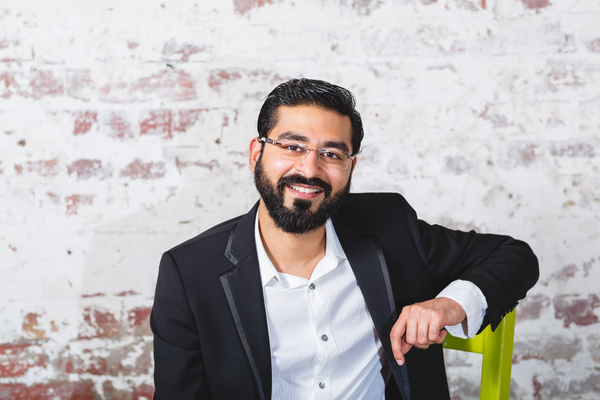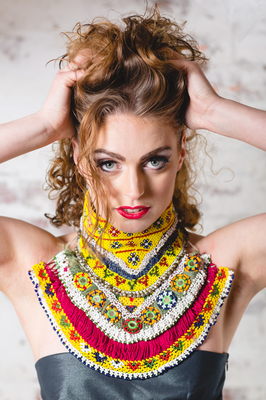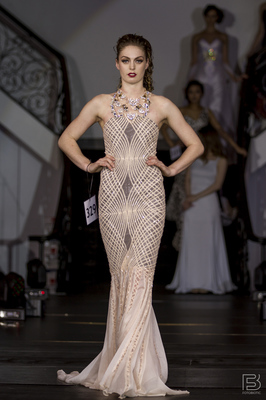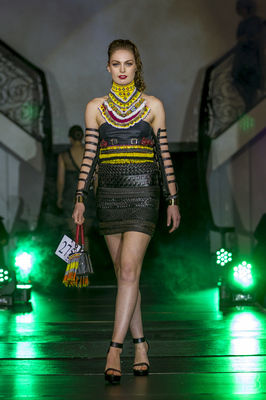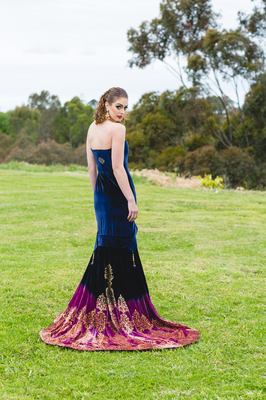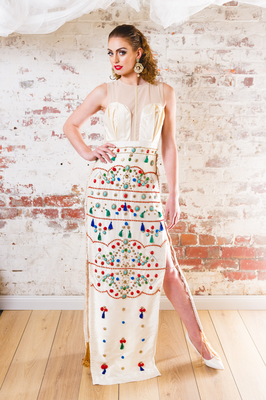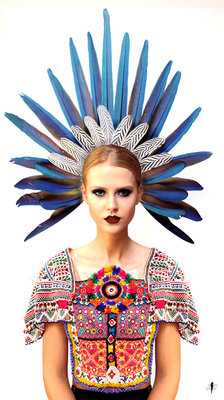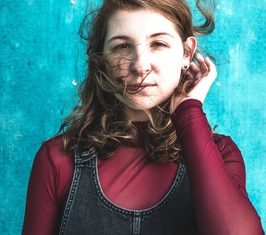Ethnic cultures inspire the striking creations of Ali Rauf. ELISSA FRIDAY discovers the international background and artistic philosophy of Geelong’s 2016 Australian Designer of the Year.
Music, fine arts and especially the ethnic clothing of other cultures inspire award-winning fashion designer Ali Rauf.
He finds them all “anywhere, anytime” in Geelong, where he has lived at Bell Park for the past seven and a half years.
“I love Geelong,” Ali declares.
Ali was born in Saudi Arabia but his family moved to Pakistan where his father served in the army, with international postings every two years.
During his family travels Ali learnt about various cultures, building inspirations for his striking designs.
After completing high-school he moved to the United States for study before securing a scholarship from Deakin University in Geelong. He eventually graduated with a Bachelor of Design (Architecture).
“I always wanted to be in a field that was creative, like, always,” Ali says.
“The degree helped a lot with graphic design and photography, like learning skills to manipulate textiles and things like that. It helped with the fashion design aspect.”
Ali began taking his fashion design creations seriously as a brand only two and half years ago, launching Bird Skin.
He entered his first Fashion Awards Australia in 2015, winning two categories.
Enjoying the challenge, he entered again in 2016 to set himself a “deadline” for new designs. He won three categories and the overall title, Australian Designer of the Year.
“It was pretty much very new, I didn’t know what to expect. I was very surprised,” Ali admits.
“They do a judging session a week before the actual event. Each model is taken into the room – it’s all anonymous.
“They check everything – the stitching skills, construction, lines, finish, everything – so, it’s incredibly hard.”
Entering 16 designs on five models was “incredibly chaotic”, Ali says.
He and his team were kept busy changing model looks, with little time in between each of the categories.
With a keen interest in manipulating textiles and embroidery, Ali appreciates the “exceptional” crafts of the Middle East.
“The spirit of making everything by hand” in rural areas was particularly intriguing, he says.
Ali’s inspirations depend on a “trigger that can happen at any time”.
“I work in a way where I’ll be really obsessed with a piece, where every detail has to be done in my head,” he explains.
“Major brands do have an influence of what’s in and out. I don’t necessarily look at that but it’s always about the unique perspective that gets me”.
Ali notably incorporates feathers in his designs for clothes and accessories, including fascinators, clutch bags and jewellery.
He sources the feathers online from an “amazing woman” whose son owns a bird farm.
“They look like they’re spraypainted or something like that. They’re absolutely amazing and very rare as well.
“I know when the birds match and when they shed feathers, so I contact her at that time and she just sends them through.
“It’s a huge blessing that I got to meet her.
Ali’s winning designs involve close attention to tailoring and “a very different or unique perspective to the concept”.
“I think it starts with the silhouettes,” he contends.
“You can have kind of edgy cutting or tailoring but it has to complement the female body; flattering, interesting but not overwhelming.
“The embellishments and the embroidery aspect have to be there and I like styling it with complementary accessories.”
Ali hopes to further his design career to the opening of a shop that includes its own production processes, ranging from embroidery and stitching to pattern-making and more. His envisages a venue that becomes a popular destination for anyone interested in fashion.
“I’d definitely love to own a shop – it’s kind of a dream,” he says.
Ali enjoys the interest in his hand-made design, considering the demand for mass-produced fashions from elsewhere “sad”.
“It would be nice to encourage that hand-making kind of culture again”.
Ali is interested in evening wear but also creates outfits for festivals, which he describes as day-wear “with bling”.
He’s also keen to enter more design awards and see his creations on new runways as a means of influencing Australian fashions.
“Considering we come first in the time zones, we should be setting trends”, he laughs.


